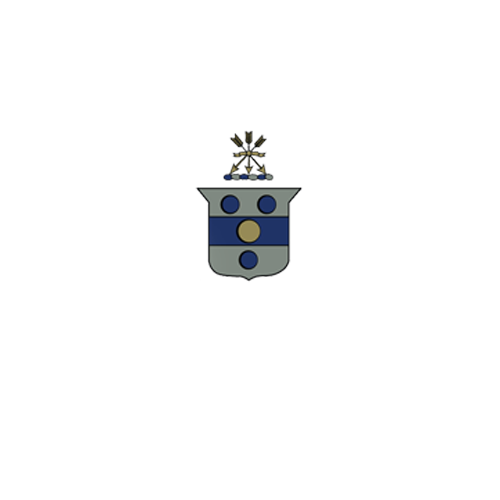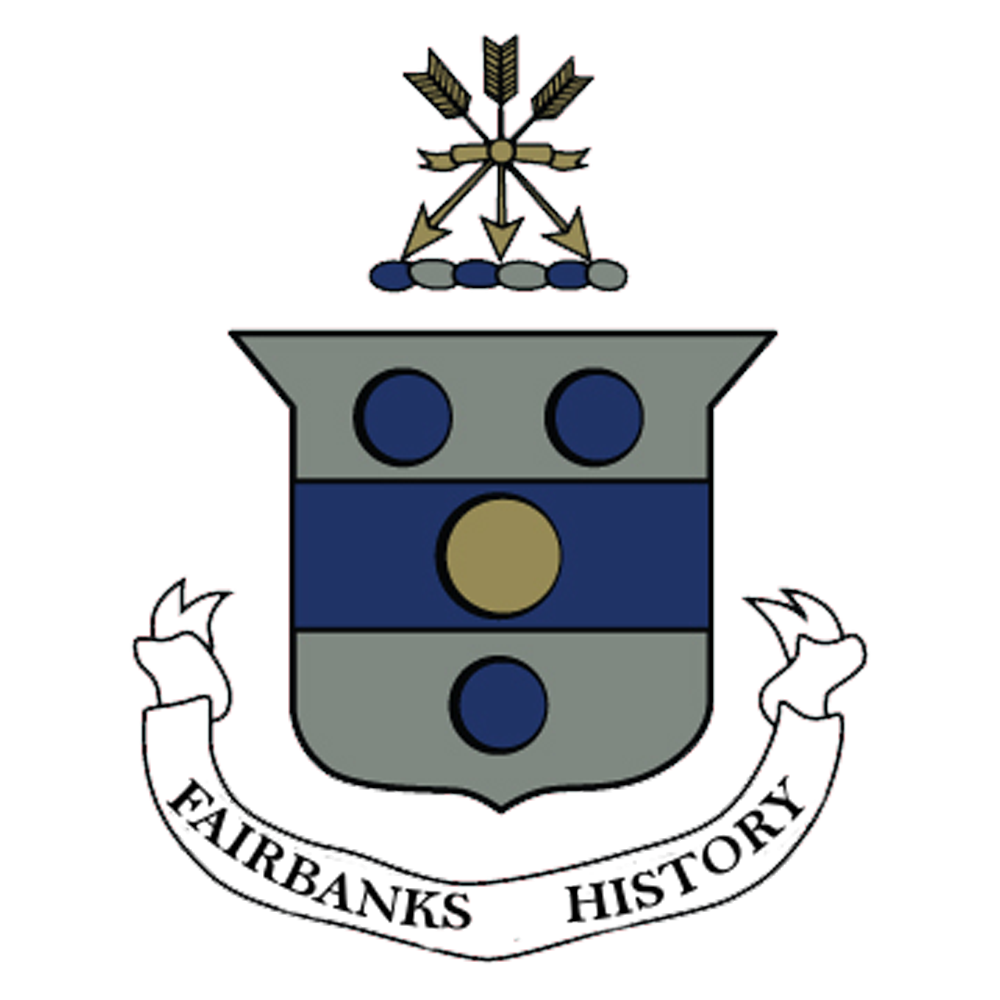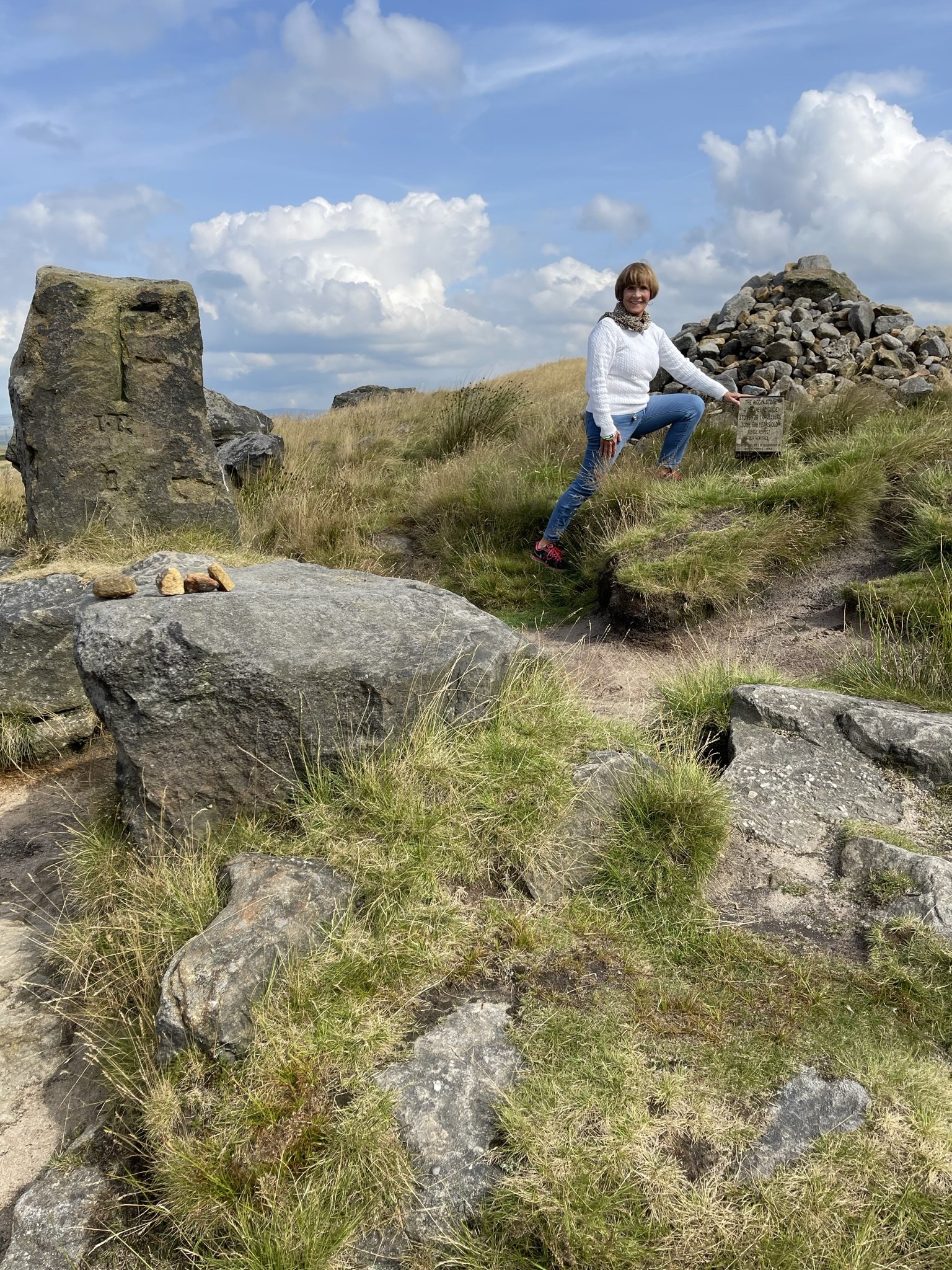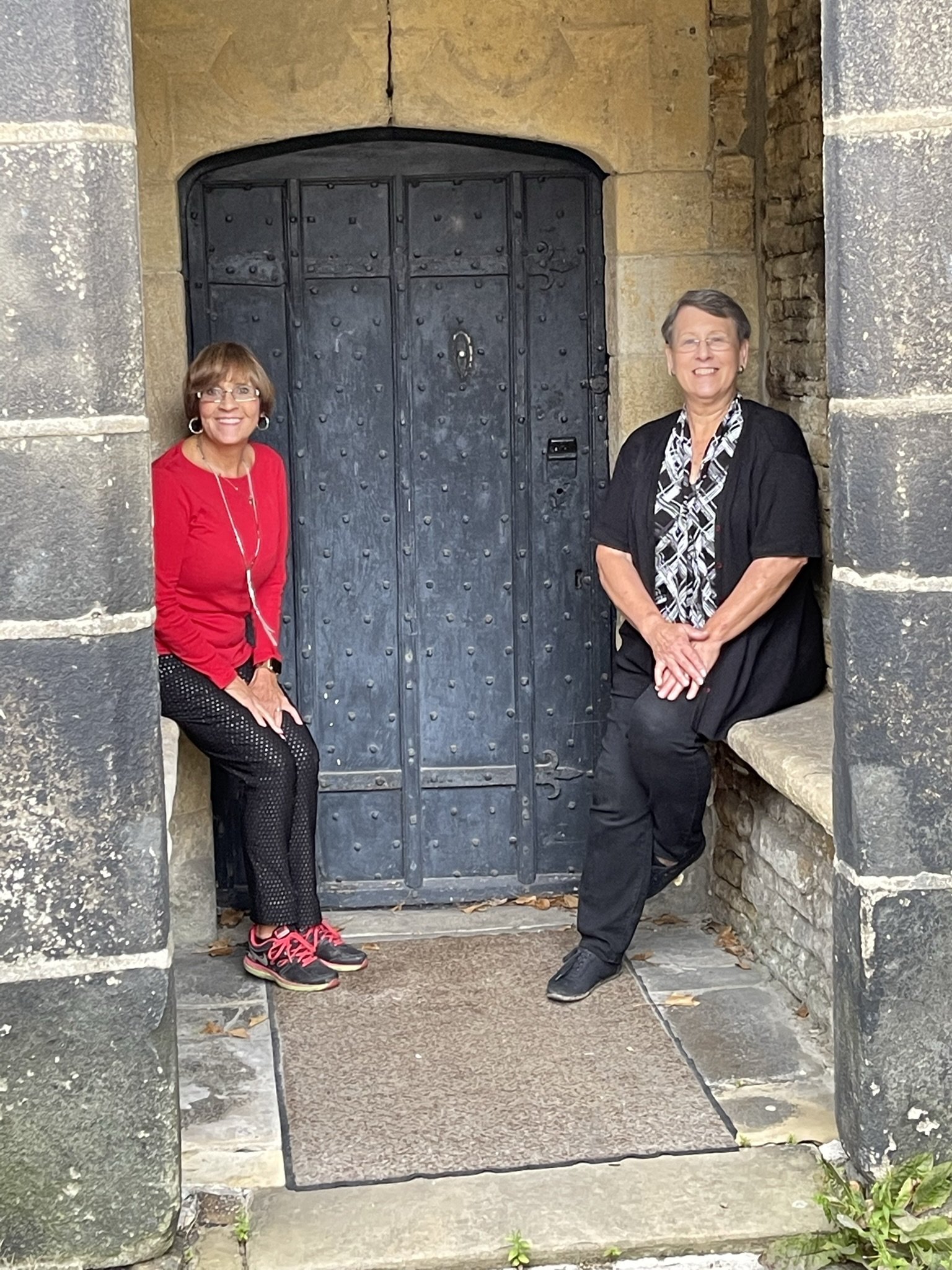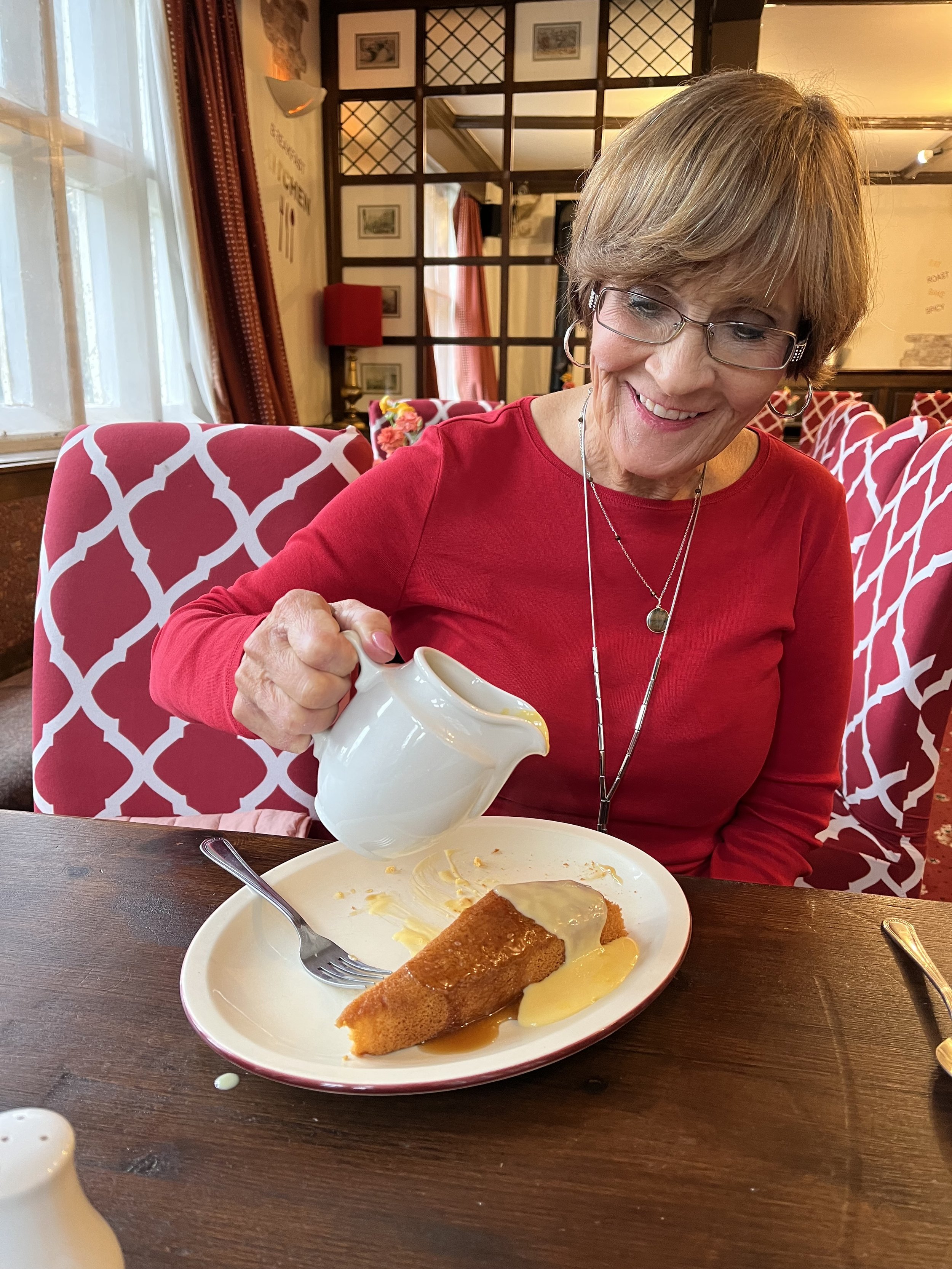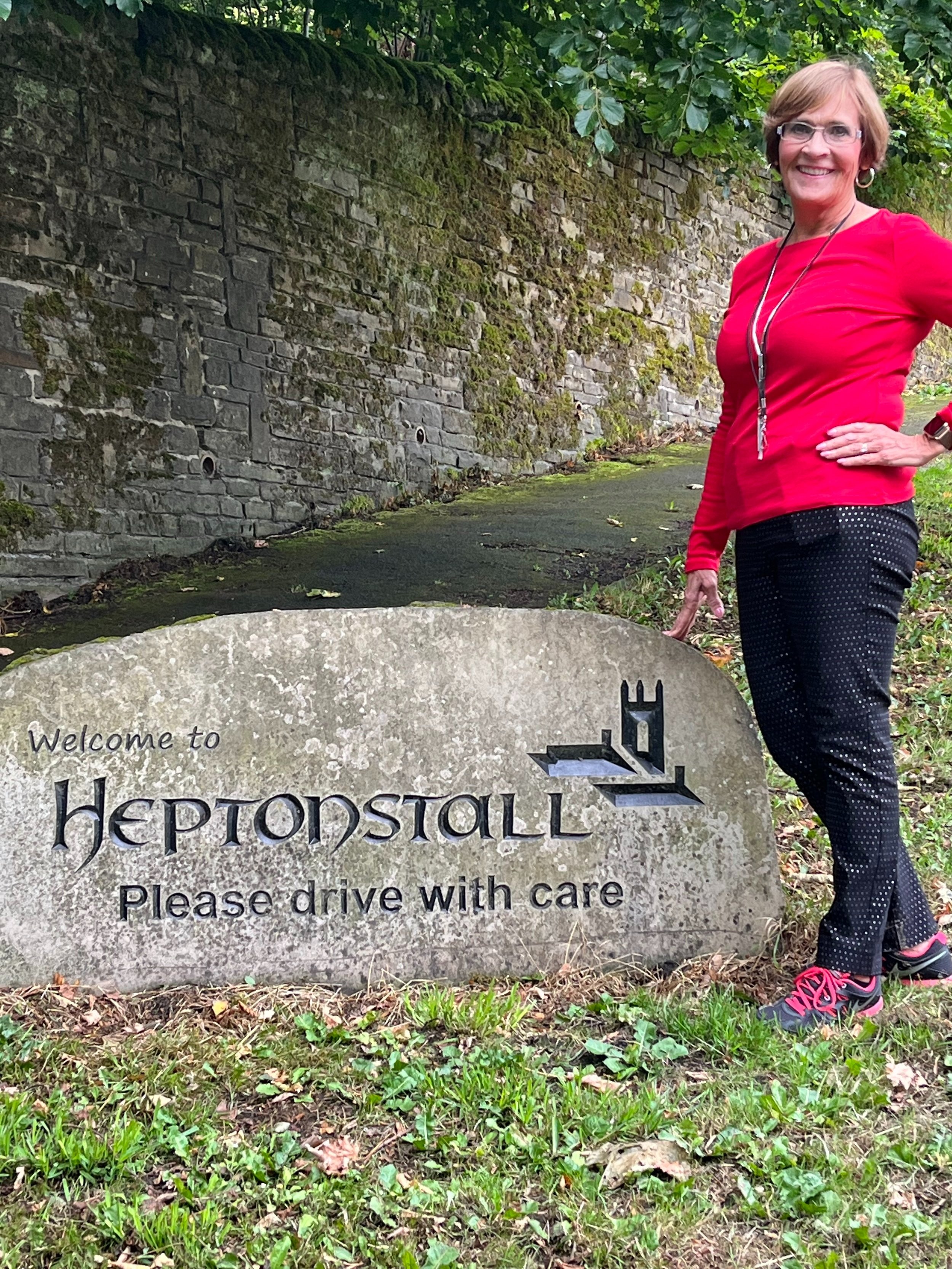Touring England of the 1600s: Focusing on the Fairbanks Family: Area Surrounding Sowerby, West Yorkshire
The Fairbank ancestors related to the emigrant Jonathan Fairbanks were centered in Sowerby, West Yorkshire, England, from the 1500s through today. There were several surrounding towns and locations important in the study of both the Fairbanks and Prescott histories. Come climb the steep slopes of the Pennine Hills glimpsing into history to learn about these locations that could have helped shape their lives in the 1600s.
The Aggin Stone
The Aggin Stone on Blackstone Edge outside of Ripponden, West Yorkshire
The Aggin Stone
Before you leave Sowerby, go the short distance west to the high moor of Blackstone Edge that overlooks Rochdale and Littleborough, East Lancashire. It is a desolate but beautiful moor with rocks and wild flowers, but no trees. There you will find the ancient Aggin Stone.
The Aggin Stone, at the pinnacle of the steep hill was once a seven foot gritstone pillar that marked the boundary between Lancashire and West Yorkshire. It was also a way marker for a packhorse trail between West Lancashire and Sowerby and Halifax, West Yorkshire. It is now much shorter but retains letters carved into its face.
An ancient Roman Road is clearly visible leading from the stone down the hill toward Littleborough on the Lancashire side. A rock pile, called a carne, near the pillar was formed by travelers leaving stones there for good luck in their travels. I left one there for all the followers of this journey into the Fairbanks and Prescott history.
The route partially formed by the Roman Road is part of the packhorse trail. John Prescott probably followed it from Wigan to Sowerby when he relocated there. He wed Mary Gawkroger Platts from the Platts area of Sowerby before they left for New England in 1640. Lancashire men used this route to herd cattle to the Halifax fall fayre. People of the Pennines could barely support a pig or poultry on the poorly-arable rocky soil and depended on cattle from surrounding area.
Jonathan Fairbanks could have traveled this route. People of the 1600s were very mobile, especially as they transported wool and wool products.
To find the Aggin Stone, take A58 to The White House Inn at 0L15 0lg. Its parking lot is just steps from the metal gate across the highway that is an entrance to somewhat obscure trailhead to the stone pillar.
Sheep graze in the pasture that leads to the Aggin Stone. They are docile and often at a distance. As you hike across the alternately spongy peat, rocky , wildflower scattered, treeless terrain, watch for a sheep with glasses. While climbing an unmarked path, I lost mine. We couldn’t find them in the tangle of grasses. Luckily, I took an old pair with me, so I could enjoy the second week of my trip. There are no tree on the moor.
Steep path from the White House to the Aggin Stone.
Rock terrain and shy sheep on the moor.
Steps in the pasture to the Aggin Stone.
The Aggin Stone left, way marker and county boundary. Carne right a symbol of good luck.
Wild flowers in the pasture.
Roman Road down the hill toward Littleborough.
Old Packhorse Bridge and Old Bridge Pub
Ripponden is another destination of interest. It boasts having the oldest pub in Calderdale. The whole valley is called Calderdale because of its proximity to the Calder River. The pub is now called the Old Bridge Inn of Ripponden. Part of it dates back to 1307. Travel over the old bridge which was the old packhorse bridge that crosses the Ryburn River to the Sowerby area.
Warley
Warley is the township across the Calder River from Sowerby township. It is also steeped in history related to the Fairbanks. Grace (Smith) Fairbanks was probably born in this area. Jonathan and Grace were registered as being from this area when they were married in 1617 at St. John the Baptist Church in Halifax.
Sir Richard Saltonstall of Sowerby was a contemporary of Jonathan Fairbanks. The Saltonstall family had considerable land in Warley. Sir Saltonstall was a member of the House of Commons of Parliament during the first session under King Charles I. He was reassigned as Sheriff of West Riding of Yorkshire (West Yorkshire) after the first meeting of the House of Commons by King Charles I after he took the throne. Sheriffs couldn’t attend the meetings of the House of Commons. Those men reassigned were mostly Puritans or those who opposed King Charles I objectives. The Puritans largely lost their voice in government. Sir Richard was also active in wool, probably on the merchant side of the business.
St Mary’s Church in Luddenden HX2 6PX
Sir Saltonstall was the first assistant to Governor John Winthrop when they founded Massachusetts Bay Colony (MBC) in 1630. Sir Richard started a new town northwest of Boston and up the Charles River. Initially, it was called Saltonstall. Soon it became known as Watertown. This is the town that Jonathan and Grace are believed to live there before being accepted into the new town of Dedham, MBC.
Luddenden and Luddenden Foot, are towns in Warley Township. A cousin of the emigrant became vicar of the St. Mary’s Church from 1652-1662. His name was also Jonathan Fairbank., His tenure as vicar of that church came after the emigrant, Jonathan Fairbanks, left Sowerby for New England.
The Lord Nelson is a pub across from the St. Mary’s Church. It is still an active social gathering place. It was a favorite place of Bramwell Bronte, the only brother of the writers of the area, The Bronte Sisters. The pub, originally a house, has a date stone of 1634. This was near the time Jonathan Fairbanks and his family left England. The Brontes became famous in the 1800s.
Kershaw House Luddenden Foot
The beautiful 1370 Kershaw House was rebuilt in 1650. Its door is graced with a rose window above. Inside the pub is an example of the expansive hearths of that time. The proprietors were very welcoming. The sticky toffee, a moist cake with a sweet syrupy topping served with pudding, was delicious. Sticky toffee is popular though out the Calderdale area. Each restaurant has its own characteristic recipe, but they are variations of the same recipe.
I have found no significance of the Kershaw House to the Fairbank family at that time. Being from Warley and Sowerby, they would have known and/or visited it in the 1600s. It had so much to offer to our study of architecture of that time, I thought I must share it with you.
Hebden Bridge and Heptonstall
Hebden Bridge was an important hand-loom wool production village that sat on a packhorse trail from Burnley, Lancashire, to Halifax, West Yorkshire. Early the packhorses might have crossed the low flowing river, then a wooden bridge was built. Finally in 1510 a stone bridge was erected over the Hebden River. Crossing the bridge from the town you’ll soon discover the trailhead to a steep path to the once more affluential town of Heptonstall.
Heptonstall is important to the tour because there were Fairbank in the area for many years. It is believed they might have connections with the Sowerby Fairbank.
Sir Edmund (Beaumont) Fayrebanke was born 1415 in Sowerby, Halifax Parish. We will discuss the possible name change from Beaumont to Fayrebanke in a later blog. He died in 1460 in Heptonstall leaving two sons.
Sir William Fairbanke was born in 1455 in Kendall, West Moreland, and Sir Edmund Fayrebanke was born 1460 in Heptonstall.
A Sir Richard Fairbanke of Heptonstall died in 1517. In his will, he speaks of his father from Kendall, Westmoreland. He also gave money to a chapel there, naming it as his birthplace.
Sir Edmund Fairbank (1460-1533) was very involved with the chapel and priest, Chaplain Sir John Greenwood. Sir Edmund gave the church land and money. He died in Heptonstall. In his will he left two mazer bowls (ceremonial bowls used for trust and fidelity), blue dye for wool cloth, and a vat to hold the dye. He is said to have endowed East Field Chapel. This information taken from Sally Fairbank’s lineage from Kendal to Sowerby. She resides in Barkisland near the Aggin Stone.
I would suggest you take the bus from Hebden Bridge to Heptonstall. The walking path is very steep. I had to use the side handrails along the path to propel myself along at times. Coming down, you can enjoy the walk and may even pick some red raspberries along the way if it is late July.
The people of the 1600s were mobile, Jonathan Fairbanks moved his family five times between 1618 and 1633, Sowerby, Shelf, Sowerby, Thornton-in Craven, and back to Sowerby. Undoubtly, we walked the paths that Jonathan Fairbanks and his family traveled.
The English people are friendly and the vistas are beautiful. It’s worth adding to your trip to West Yorkshire, England.
Up Next
Visiting Thornton-in-Craven, twenty-seven miles northwest of Sowerby Town is our next destination. This is the area of three houses probably owned by the Fairbank family. John Fairbank, Jonathan the emigrant’s father, lived there from the around 1608 until he died in 1625. This was one of the four locations the Jonathan Fairbanks family lived while in England. It was probably the birthplace of Susan Fairbanks, their second daughter and fifth child. We will take you inside one of the houses, the churches and the school that Jonathan and Grace’s children probably attended.
